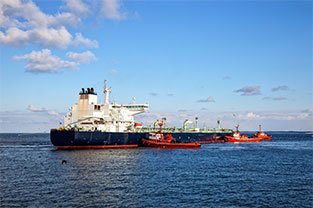Maritime/Admiralty Accidents Off The Louisiana And Gulf Coast
An Attorney Experienced In Offshore Accident Claims
The Jones Act
The Jones Act is a body of law originally enacted to protect seamen who are generally out to sea for several months at a time and can't just quit and go home if they aren't treated properly. Under the Jones Act, the seaman can sue his or her employer under Louisiana's tort law; otherwise it would be a workers' compensation case or covered under the Longshore and Harbor Workers' Compensation Act (LHWCA). The awards are generally higher for Jones Act seamen and the burden of proof is often lowered. A Jones Act seaman will generally bring a claim against an employer for negligence or an unseaworthy vessel. An unseaworthy vessel means a vessel or any of its parts being unfit for their intended purpose. An untrained crew or even the untrained seaman can be the basis for a claim for an unseaworthy vessel.
To qualify as a Jones Act seaman, you must be more or less permanently assigned to a vessel or an identifiable fleet of vessels. The injury doesn't have to take place on the vessel, but the majority of the seaman's work must take place on the vessel. An identifiable fleet of vessels usually means single ownership of a group of boats or other vessels. This definition applies when the worker does not perform all of his or her work on one vessel. When he or she moves from vessel to vessel, they must be under common ownership.
A vessel is anything that is capable of navigation over the water. Examples of vessels are jack-up rigs, semi-submersibles, barges, tugs and supply boats. Fixed platforms that have legs permanently attached to the ocean floor are not vessels. Even if a worker does not qualify as a Jones Act seaman, if the injury was caused by someone other than his employer, he or she still may have a tort claim under general maritime law.
Maintenance and Cure
Maintenance and cure is an obligation owed by the maritime employer to a Jones Act seaman when he or she is injured while in the course and scope of employment. (A Jones Act seaman is a maritime worker who is more or less permanently assigned to a vessel or identifiable group of vessels.) Maintenance and cure is not workers' compensation and does not in any way represent wages lost by a seaman.
Most seamen will work offshore for long periods of time, typically seven, 14 or 30 days. While working, the employer provides room and board for employees, including a roof over one's head and three meals a day. Maintenance is the obligation of the employer to make up for the room and board the worker would have had if he or she had not been injured. Cure is the obligation of the employer to pay the medical bills the injured worker incurs as a result of the injury he received while in the course and scope of his employment.
The obligation of maintenance and cure runs until the injured worker reaches maximum medical improvement (MMI). Maximum medical improvement is reached when doctors can no longer do anything that will improve the worker's medical condition. Medical treatment for pain relief only is not considered something to improve the worker's medical condition. Therefore, if you are receiving medications only for pain relief, you can still be considered to have reached MMI.
